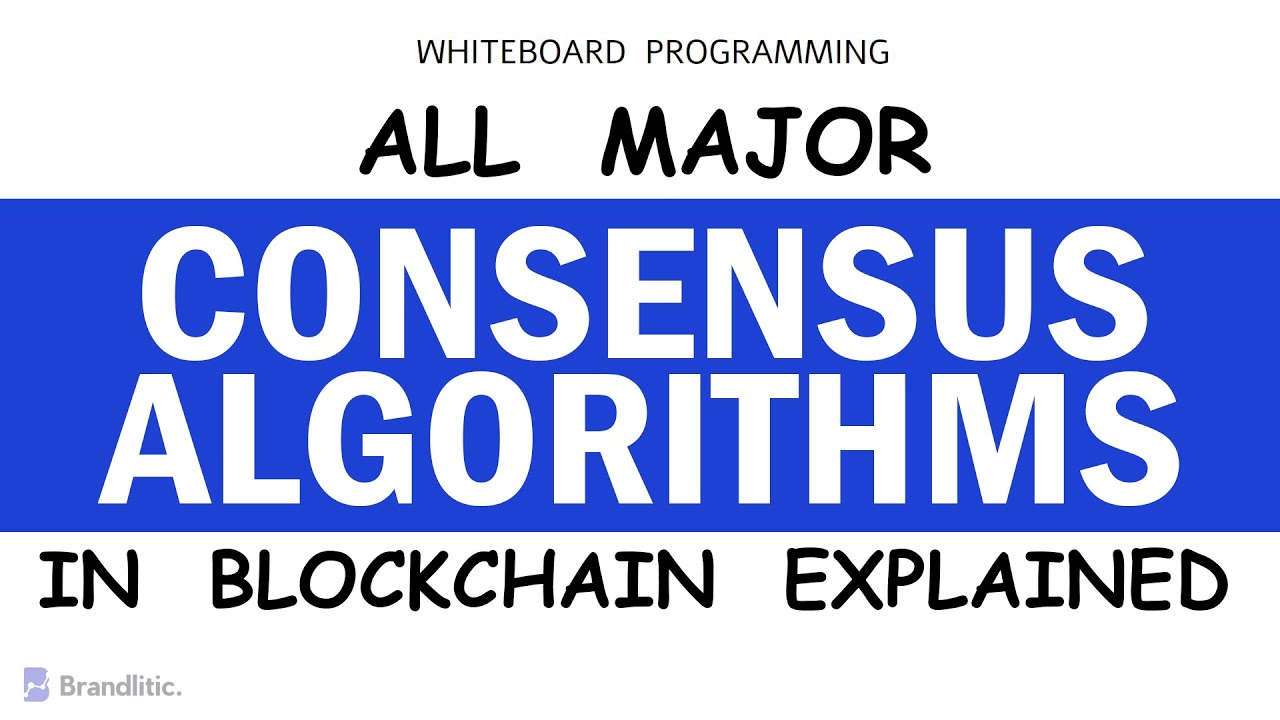What is Proof of Work? (Cryptocurrency Explanation)
Summary
TLDRThis video explains the concept of proof of work (PoW), a consensus mechanism used in blockchain networks like Bitcoin. It compares PoW with proof of stake (PoS), detailing the importance of consensus in decentralized systems. PoW ensures secure, transparent transactions by requiring miners to solve complex puzzles, preventing double spending and ensuring network integrity. However, PoW faces challenges such as high energy consumption and scalability issues. Despite its drawbacks, PoW remains widely used in projects like Bitcoin, Litecoin, and Monero, making it a critical model in the crypto world.
Takeaways
- 🔗 Proof of work (PoW) is the first consensus mechanism used in blockchain, famously employed by Bitcoin.
- 🔄 Consensus mechanisms ensure all participants in a blockchain network agree on the state of the distributed ledger, maintaining transparency and security.
- 🛡️ Proof of work prevents double spending by ensuring that users cannot spend the same cryptocurrency more than once.
- ⛏️ Miners solve complex puzzles (hash functions) to validate transactions and add new blocks to the blockchain, securing the network.
- 💻 Proof of work requires significant computational power, making it costly to manipulate the system, which enhances security.
- 🌍 The environmental impact of proof of work is significant, consuming as much energy as entire countries, though some miners are adopting renewable energy solutions.
- 📉 Proof of work faces scalability issues, including high transaction fees and slow processing times during network congestion.
- 🚫 Proof of work lacks strict penalties for malicious miners, unlike proof of stake (PoS), which has penalties for bad actors.
- 📈 Despite its flaws, proof of work remains widely used by cryptocurrencies such as Bitcoin, Litecoin, Monero, and Bitcoin Cash.
- ⚖️ Proof of work ensures that all participants in the network have the same transaction records, promoting fairness and trust in the decentralized system.
Q & A
What is a consensus mechanism and why is it important for blockchain?
-A consensus mechanism ensures that all participants in a blockchain network have the same version of the ledger. It is essential for maintaining transparency, security, and preventing fraud, as it ensures that transactions are valid and consistent across the network.
How does a traditional centralized database differ from a blockchain in terms of control?
-In a traditional centralized database, a single entity controls updates, modifications, and deletions. In contrast, blockchain is decentralized, with every participant having a copy of the ledger, ensuring that no single person can manipulate the records.
What is proof of work (PoW) and how does it work on the blockchain?
-Proof of work is a consensus mechanism where participants (miners) use computational power to solve complex puzzles to validate transactions and add new blocks to the blockchain. The first to solve the puzzle gets rewarded, ensuring that only legitimate transactions are added to the blockchain.
What is the purpose of mining in a proof-of-work system?
-Mining in a proof-of-work system is the process of solving complex cryptographic puzzles to validate transactions and add new blocks to the blockchain. Miners compete to find the correct solution and, when successful, they are rewarded with cryptocurrency.
What problem does proof of work solve in the context of cryptocurrency?
-Proof of work helps solve the problem of double spending, where someone could potentially use the same cryptocurrency twice. It ensures that once a transaction is verified, it cannot be duplicated, preserving the integrity and value of the currency.
What are some criticisms of proof of work in terms of energy consumption?
-Proof of work is criticized for its high energy consumption, as mining requires substantial computational power. This has led to concerns about its environmental impact, with some estimates suggesting it uses as much energy as an entire country like Switzerland.
How does proof of work ensure security on the blockchain?
-Proof of work ensures security by requiring miners to invest significant computational effort to validate transactions. This makes it difficult and expensive for any malicious actor to manipulate the blockchain, as they would need to control over 51% of the network's computing power.
Why does proof of work have issues with scalability?
-Proof of work struggles with scalability because each block takes around 10 minutes to validate and has a limit on the number of transactions it can include. During peak times, this leads to delays and high transaction fees, making it less efficient for large-scale use.
What happens when a miner behaves maliciously in a proof-of-work system?
-In a proof-of-work system, a malicious miner may be cut off from adding future blocks if detected, but there are no severe penalties for bad behavior. This is one of the criticisms of proof of work, as it lacks strict punishments for malicious actions compared to proof of stake.
What are some cryptocurrencies that use proof of work?
-In addition to Bitcoin, other cryptocurrencies that use proof of work include Ethereum (although it's transitioning to proof of stake), Litecoin, Monero, Bitcoin Cash, and Zcash. These projects utilize PoW to solve the consensus and double spending problems.
Outlines

This section is available to paid users only. Please upgrade to access this part.
Upgrade NowMindmap

This section is available to paid users only. Please upgrade to access this part.
Upgrade NowKeywords

This section is available to paid users only. Please upgrade to access this part.
Upgrade NowHighlights

This section is available to paid users only. Please upgrade to access this part.
Upgrade NowTranscripts

This section is available to paid users only. Please upgrade to access this part.
Upgrade NowBrowse More Related Video

Proof of Work in Blockchain

Proof of Work in Blockchain Explained | What Is Proof of Work? | Blockchain Tutorial | Simplilearn

What is Proof of Stake - Explained in Detail (Animation)

Proof-of-Stake (vs proof-of-work)

60 Istilah Dunia Cryptocurrency | Indonesia

All Major Blockchain Consensus Algorithms Explained | Consensus Mechanism in Blockchain
5.0 / 5 (0 votes)